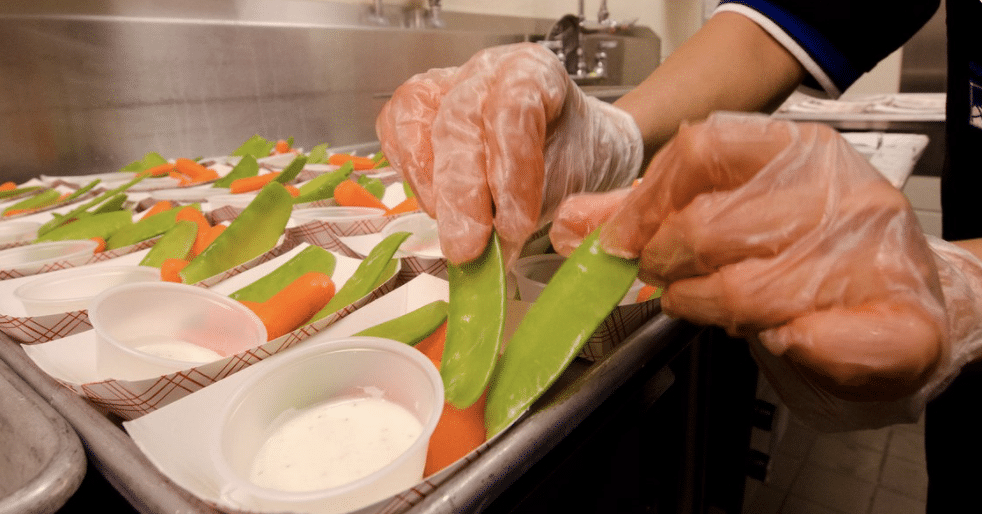If there’s one thing school nutrition directors are looking forward to this upcoming school year it’s returning to the normalcy of feeding kids back in the familiar setting of the cafeteria. “These professionals worked so hard to overcome so many different challenges when schools closed abruptly at the start of the pandemic, and they can’t wait to interact with students and families in a different way than loading food and groceries in the trunk of a car,” says Laura Hatch, co-vice president of impact for school food nonprofit FoodCorps. “They did heroic work, but they’re exhausted.”
Little wonder. In some cases in a matter of 24 hours, school nutrition directors pivoted everything about their operations in March 2020, moving from in-person meals to grab-and-go bags that could be picked up curbside, distributed to neighborhoods via school bus routes, or delivered directly to families. They did get a lot of legislative help: Thanks to the Families First Coronavirus Response Act of 2020 and the American Rescue Plan Act of 2021, dozens of waivers were able to be issued by the USDA. These allowed schools to eschew things like handing meals over to children only (as opposed to parents and caregivers) and the usual congregate feeding mandates; states could also provide pandemic EBT cards to fill in grocery gaps beyond the reach of school-provided breakfasts and lunches.
But figuring out how best to respond to a need that only grew as weeks went on was hardly a simple task, and the difficulties were myriad and varied, says Hatch.





